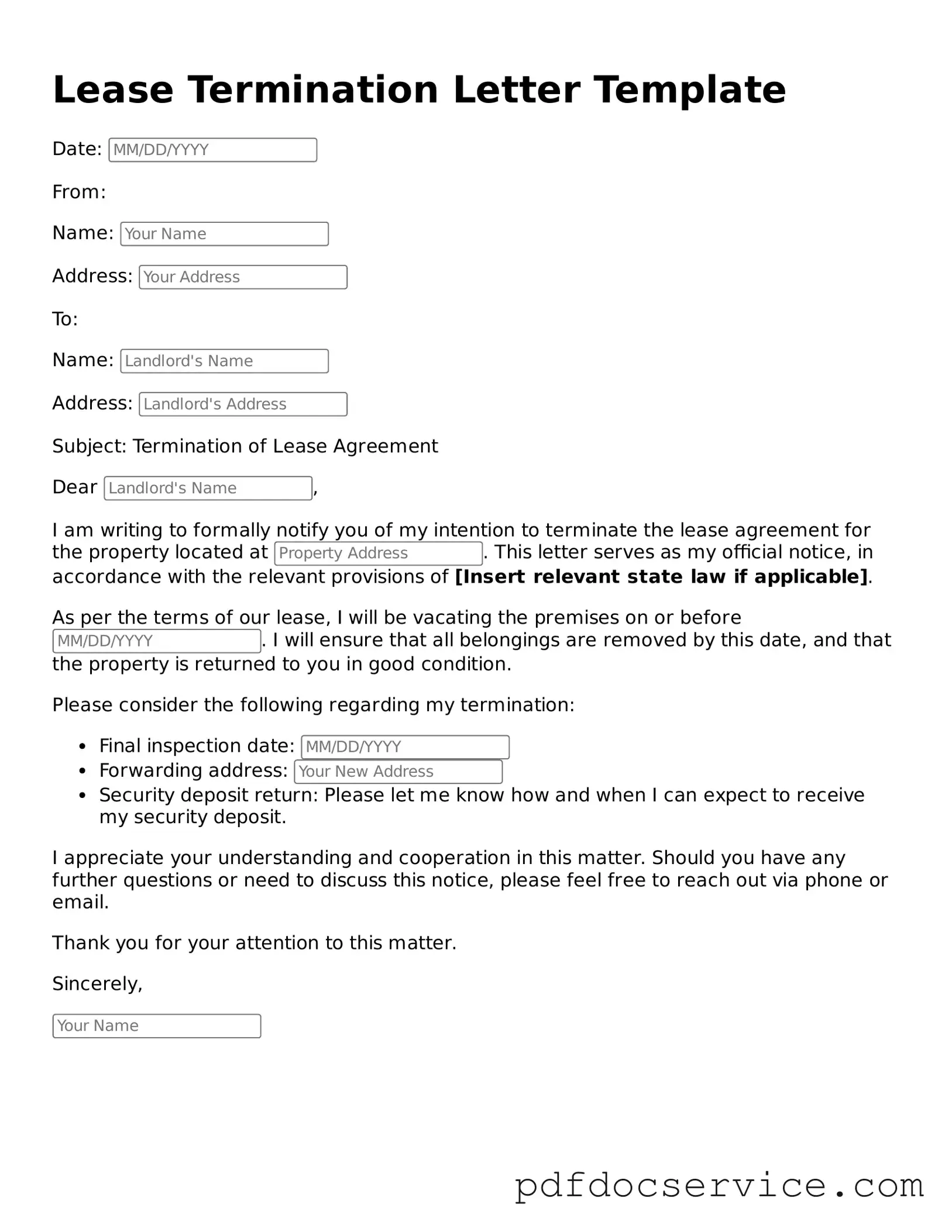What is a Lease Termination Letter?
A Lease Termination Letter is a formal document used by a tenant or landlord to notify the other party of the intention to end a lease agreement. This letter outlines the reasons for termination and provides essential details such as the termination date. It serves as an official record of the decision to vacate or terminate the lease.
When should I send a Lease Termination Letter?
Timing is crucial when it comes to sending a Lease Termination Letter. Generally, you should send it at least 30 days before your intended move-out date, but this can vary based on the terms of your lease. Always check your lease agreement for any specific notice requirements. Sending the letter promptly ensures that the other party has enough time to make necessary arrangements.
While there is no strict format required, a Lease Termination Letter should be clear and professional. It should include:
-
Your name and address
-
The landlord's or tenant's name and address
-
The date of the letter
-
The subject line indicating it is a lease termination notice
-
A clear statement of your intention to terminate the lease
-
The date you plan to vacate the property
-
Your signature
Using this structure helps ensure that all necessary information is communicated effectively.
What reasons can I include for terminating the lease?
While it is not always necessary to provide a reason, you may choose to include one. Common reasons include:
-
Relocation for work
-
Financial hardship
-
Health issues
-
Problems with the rental property
Providing a reason can sometimes foster goodwill and make the process smoother, especially if you have a positive relationship with your landlord.
What if I do not have a valid reason to terminate the lease?
Even if you do not have a specific reason, you can still terminate the lease as long as you follow the notice requirements outlined in your lease agreement. Most leases allow for termination with proper notice, regardless of the reason. It's important to adhere to these terms to avoid any potential legal issues.
Can I terminate my lease early?
Yes, it is possible to terminate a lease early, but you may face penalties or consequences depending on your lease agreement. Some leases have early termination clauses that outline specific conditions under which you can break the lease without penalty. If no such clause exists, you might be responsible for paying rent until the lease expires or until a new tenant is found.
What happens after I send the Lease Termination Letter?
After sending the Lease Termination Letter, the landlord or tenant should acknowledge receipt of the letter. This acknowledgment can be verbal or written. It's advisable to keep a copy of the letter for your records, as well as any correspondence related to the termination. You should also prepare for the move-out process, including cleaning the property and scheduling a final walkthrough if necessary.
Is it necessary to have the letter notarized?
No, notarization is not typically required for a Lease Termination Letter. However, if you want to ensure that the letter is recognized as an official document, you may choose to have it notarized. This can add an extra layer of credibility, especially if disputes arise later.
What if I change my mind after sending the letter?
If you change your mind after sending the Lease Termination Letter, communicate with the other party as soon as possible. Depending on the circumstances and the willingness of the landlord or tenant, it may be possible to rescind the termination. However, this is not guaranteed, and it’s essential to discuss the situation openly to find a mutually agreeable solution.
Can I use a template for the Lease Termination Letter?
Yes, using a template can be a helpful starting point for drafting your Lease Termination Letter. Templates provide a structured format and ensure that you include all necessary information. However, be sure to customize the template to reflect your specific situation and the terms of your lease. Personalizing the letter can make it more effective and relevant.
